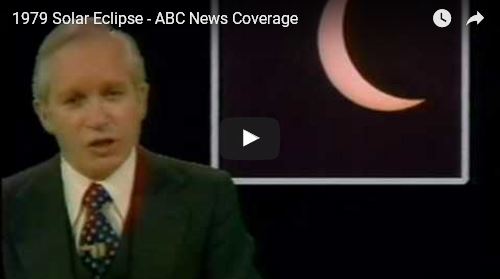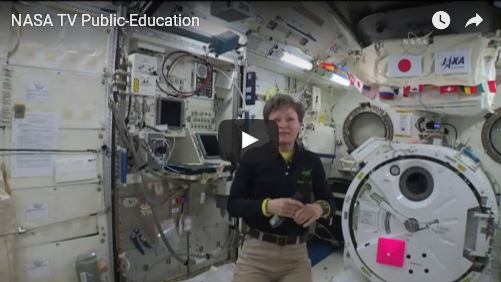Update: 3:30 p.m. ET—This concludes Newsweek’s coverage of the 2017 solar eclipse.
The eclipse was seen in a total of 14 states, passing through Oregon, Idaho, Wyoming, Montana, Nebraska, Iowa, Kansas, Missouri, Illinois, Kentucky, Tennessee, Georgia, North Carolina and South Carolina.
The next solar eclipse is predicted in the United States in April 2024. It will pass through Mexico before entering Texas, Kentucky, Ohio, New York and Maine.
If you can’t wait that long and have caught the eclipse-chasing bug, a lunar eclipse, turning the moon blood red, will take place in Argentina in July 2018.

Solar Eclipse in Depoe Bay, Oregon, on August 21.REUTERS/MIKE BLAKE
Update: 3:00 p.m. ET—President Donald Trump, first lady Melania Trump and their son, Barron Trump, observed the solar eclipse from the White House's Truman Balcony. When asked how he was enjoying the view, Trump gave a thumbs-up.

U.S. President Donald Trump watches the solar eclipse from the Truman Balcony at the White House in Washington, D.C., on August 21.REUTERS/KEVIN LAMARQUE
2:45 p.m. ET—The solar eclipse has hit South Carolina as the final state in the path of the totality is cast into shadow.
Update: 2:30 p.m. ET—According to The Wall Street Journal, staff at the the Oakland Zoo have observed their baboons and camels acting unusually.
"They know something's up," Erin Harrison, spokeswoman for the zoo, said of the Hamadryas baboons. "They're literally running around and playing with each other."
Animals have been documented in the past acting strangely during the solar eclipse. In previous eclipses, observers have seen "songbirds go quiet, large farm animals lie down, crickets start to chirp and chickens begin to roost," The Los Angeles Times reported last week.
Update: 2:00 p.m. ET—In Beatrice, Nebraska, totality has just occurred. This footage from ABC news shows the eerie darkness on the prairie as the moon shadow passed over.
Update: 1:45 p.m. ET—Ivanka Trump posted a picture of herself Monday donning her opaque eclipse viewing glasses, reminding eclipse gazers to protect their eyes when watching the sun. Earlier, it was revealed that President Donald Trump would be watching the solar event from the White House’s Truman balcony.
Update: 1:30 p.m. ET—We have totality. At the westernmost point of the United States, the moon has passed directly in front of the sun. As the moon moved out of the sun’s path in images sent by NASA, it created the iconic diamond ring effect as the first rays of light re-emerged.

Totality: In Oregon, the first instance of totality in the United States since 1973 has been recordedNASA
Update: 1:15 p.m. ET—The first moment of totality in the U.S. is just minutes away in Oregon. This image NASA shows there is little more than a sliver of the sun still in sight.

An image from Madras, Oregon broadcast by NASA has shown there is little more than a sliver of the sun still in sight.(NASA)
Update: 1:00 p.m. ET—In Carbondale, Illinois, the very first contact has been made as the solar eclipse begins there. The city is the best point to observe the solar event, or the point where there will be the longest period of darkness. In Carbondale, the sun will be completely covered for a total of two minutes and 40 seconds.

A Star Wars storm trooper greets the marching band at the football stadium to watch the total solar eclipse at Southern Illinois University in Carbondale, IllinoisREUTERS/BRIAN SNYDER
Update: 12:45 p.m. ET—Astronauts onboard the International Space Station (ISS) will be getting a different perspective of the solar eclipse, but views from Earth may be better than those from space. The ISS won't see a total eclipse from orbit, according to NASA.
The six individuals on the ISS will see the eclipse three times. "Over three different passes, we'll get to see the solar eclipse looking up from the station on the first one," astronaut Randy Bresnik said.
At most, the team will get to see an 85 percent eclipse.
Update: 12:30 p.m. ET—NASA has broadcast some of the first images of the start of the solar eclipse from Salem, Oregon, where the moon is moving into position for the totality, directly in front of the sun.

Salem Oregon: NASA has broadcast images of the start of the solar eclipse(SCREEN GRAB)
Update: 12:15 p.m. ET—In Oregon, where the moon is scheduled to start passing in front of the sun shortly, eclipse chasers have started making their way inland from the coast because of low lying cloud in some areas. The traffic chaos authorities had feared because of the influx of visitors to the state had not materialized. But gridlock could take hold once the eclipse is over, shutting down local streets and highways.

A parking sign for people visiting for the Solar Eclipse is shown in Depoe Bay, Oregon, U.S. on August 9, 2017.REUTERS/JANE ROSS
Update: 12:00 p.m. ET—President Donald Trump will be watching today’s solar event from the White House’s Truman balcony. The eclipse seen from Washington will only be a partial one, as it lies outside the path of totality.
Update: 11:45 a.m. ET—At the furthest, most eastern point of the U.S. to see the solar eclipse in South Carolina, locals and visitors are making their way to chosen viewing points. In South Carolina, the eclipse enters the state at 2:36 p.m. ET and exits the coast at 2:49 p.m.
Update 11:30 a.m. ET—NASA's Eclipse Ballooning Project is launching a total of seven high-altitude balloons to record the solar eclipse. Their sensors will collect temperature data and cameras will take a total of 180,000 images.
Update: 11:15 a.m. ET—Nathan Howard, a photojournalist in Newport, Oregon, snapped this shot of a colleague who is prepared for the totality. There are at least four cameras and lenses in this picture, not to mention light readers and sound equipment. We’re also glad to see these photographers are taking safety seriously and wearing protective opaque glasses for the eclipse.
Update: 11:00 a.m. ET—The National Weather Service was predicting favorable conditions for Oregon and the northwest ahead of the eclipse. The forecast over central states was less good.
Update: 10:45 a.m. ET—In Oregon, where the total eclipse will be seen in just an hour and 20 minutes, locals and visitors have gathered to watch the solar event.

Update: 10:30 a.m. ET—The last total eclipse in the U.S. occurred in 1979. At the time, Frank Reynolds, who covered the eclipse for ABC News, said he hoped the next solar eclipse would come in an era of world peace.
“The last solar eclipse to be seen on this continent in this century. As I said, not until August 21, 2017, will another eclipse be visible from North America,” he said.
Update: 10:13 a.m. ET—In Illinois on Monday, officials were expecting large crowds of eclipse viewers hours before the area was expected to see the eclipse. In Carbondale, which is in the path of totality, the eclipse was expected to last nearly three minutes, starting at 1:20 p.m.
Original story:
The Great American Eclipse is here. From Salem, Oregon, to Charleston, South Carolina, the total eclipse will be on display in the United States mainland for the first time since 1979. As it travels the breadth of the U.S., passing through a 70-mile wide corridor, thousands will look skyward to watch one of nature's greatest and most awe-inspiring phenomena as the moon passes directly in front of the sun. A live stream of the event is embedded below.
In Oregon, the first state to be plunged into darkness, the solar eclipse will begin at 9:05 a.m. local time as the moon creeps in front of the sun. The sun will be completely blocked by the moon around 10:16 a.m. The total eclipse will end near Charleston, South Carolina, at 2:48 p.m., after crossing 14 states from coast to coast.
Cloud coverage and possible thunderstorms could spoil the views for some. The National Weather Service is predicting the best weather conditions for the eclipse in Oregon and the Tennessee Valley, where the likelihood of cloud cover is less than 10 percent. Cloudy skies are predicted in Nebraska.
Gridlock and traffic chaos are also being predicted in states where the total eclipse will be in full view. The Federal Highway Administration is asking drivers to follow a few commonsense rules during the solar eclipse. Not recommended: pulling over on interstate highways to stop and look, or taking photos while driving. As good as opaque eclipse glasses may look, it is also recommended that Americans do not wear them while driving.
In Wyoming, officials have said the state’s population could double as a result of 600,000 people driving in to watch the eclipse. In Colorado, authorities warn that eclipse traffic could be the most significant event of the year.
Scientists are hoping that studying the eclipse will help them make solar predictions. Experts warn sky-gazers to stay safe: Staring directly at the sun can damage the eyes.

(Newsweek)